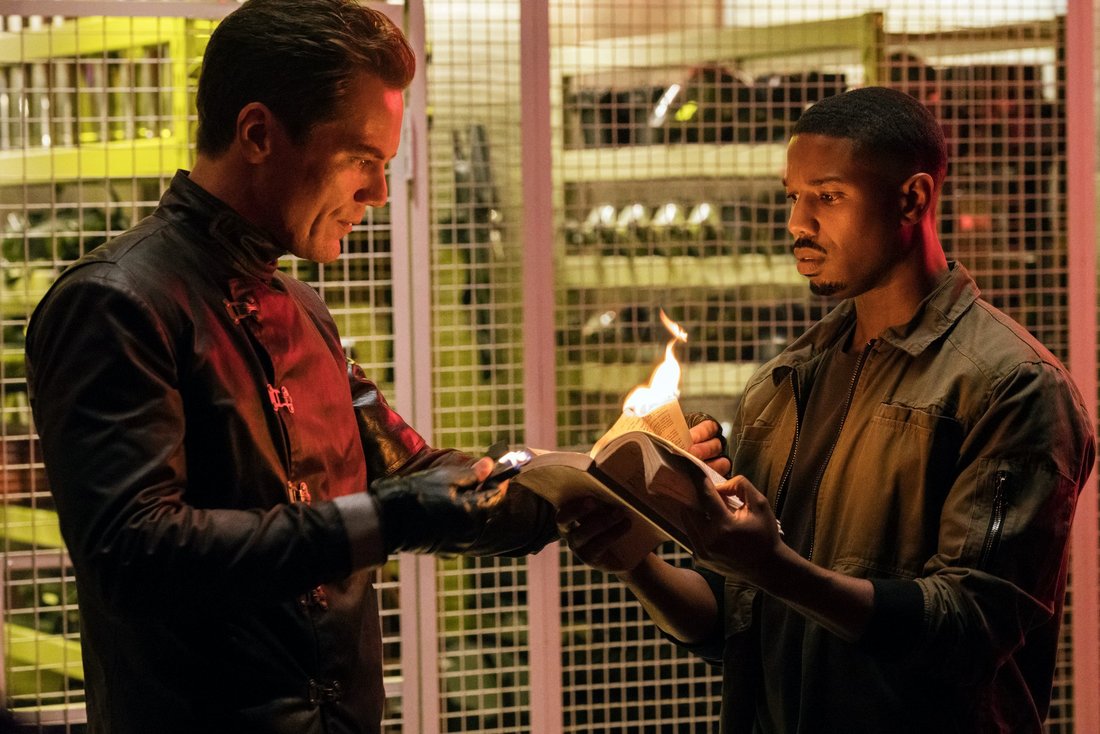 Dir. Ramin Bahrani | HBO | USA The prospect of Ramin Bahrani’s new Fahrenheit 451 adaptation for HBO (airing tomorrow on May 19) was an enticing one. With a cast featuring Michael B Jordan (whom I loved in Fruitvale Station, Creed, Black Panther) as Montag, Michael Shannon as Beatty, and Sofia Boutella as Clarisse, it promised to be an all-too-relevant study of control and government manipulation in the age of fake news. At a moment when the arts are under threat from funding cuts and disinterested leaders, and the humanities are as devalued as the humanity of anyone who isn’t straight, white and male, the film might offer a vital critique of our imperilled literary culture. In the film, Bahrani neatly addresses the rise of digital media by introducing a sinister surveillance system, Yuxie, which has a touch of HAL about it, and a government-controlled network, The 9, that prevents citizens accessing outlawed materials. Film reels, cassette tapes and hard-drives are burned alongside purportedly real books; the analogue and the digital all destroyed and reduced to the same impersonal ash in the process. It is the movie’s representation of old and new media formats that is its primary point of interest. Contrary to arguments about their essential differences—film scholars have long equated the analogue with the indexical and purists have disparaged the binary simplicity of the digital--Fahrenheit 451 sees them as continuous. Montag is fascinated by the lingering and fragile materiality of celluloid and books, touching a concealed strip of Singin’ in the Rain as if it were a living thing. But it is cloud-based technology, which exists in both human form (the ‘eels’ commit books to memory) and computer networks, that offers hope to the rebels. Neither one is valued more than the other: it is not a question of analogue or digital, but of content and art, of creation and preservation. And, without giving too much away, it is a hybrid organic-machine that provides the most assured cloud-based security in the end. All of that said, the film fails to ever reach boiling point. The action-movie aesthetics, complete with neon emojis on Minority Report screens, armoured tanks straight out of Dredd and a bit-part sexy sidekick that wouldn’t look out of place in Blade Runner 2049, are try-hard rather than indicative of real style. And the performances feel peculiarly one-note, with Jordan and Shannon too busy shouting their lines at one another to offer any nuance or depth. Ultimately, this is Fahrenheit 451 for the kind of person that claims they have read a book or watched a film just for show and spectacle, without caring for the art between its covers or frames. It is with a large degree of irony that the filmmakers reduce the story to precisely the kind of emoji-based painting-by-numbers surface culture that they set out to critique, and the film is a lukewarm adaptation that sadly doesn’t live up to expectations. I couldn’t help leaving the theatre feeling sad for all those beautiful, wasted, burned-up books. They deserved a better fate than this.
0 Comments
|
BlogArchives
November 2018
Categories
All
|
 RSS Feed
RSS Feed